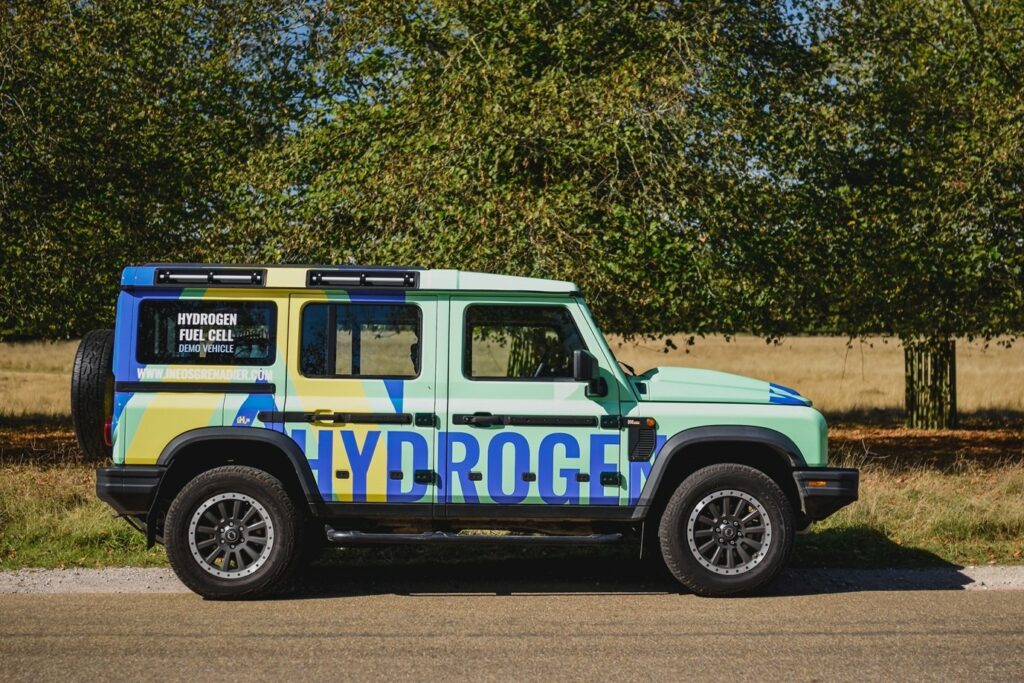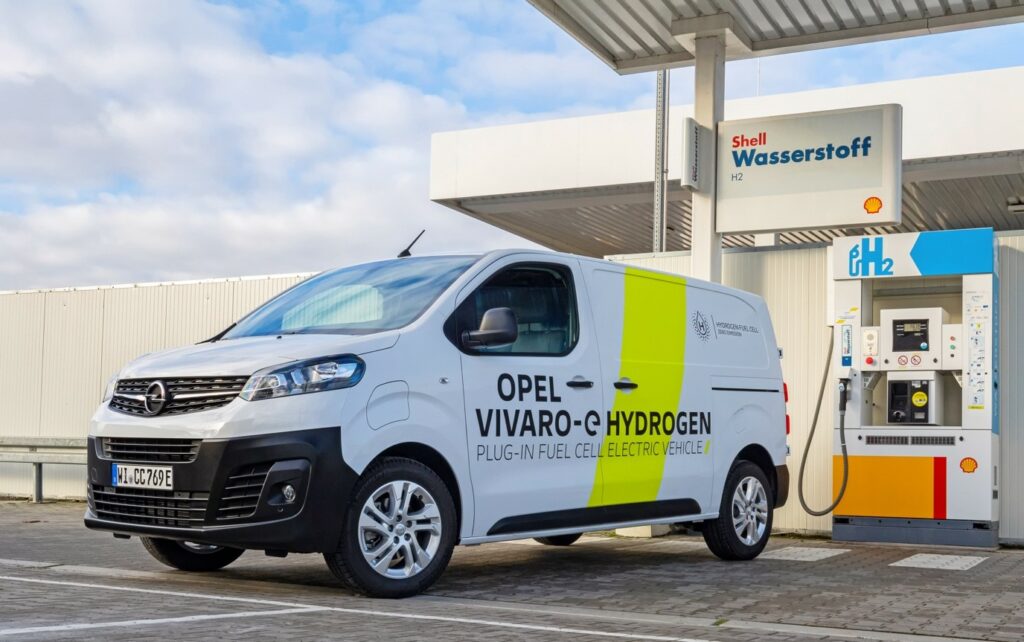Does hydrogen have a place in the automotive market?
18 June 2024

Does hydrogen have a future in the global automotive market, or has the tide fully turned to other technologies? Autovista24 special content editor Phil Curry examines the current state of the technology.
In its pursuit of zero-emission motoring, the automotive industry has chosen battery-electric vehicles (BEVs) to chase its green goals. The viability of hydrogen fuel cells, however, still seems up for debate.
The two technologies are similar in terms of their propulsion method. Both use electric motors to drive the wheels, and both emit no CO2 while in use. The energy source is the major differentiator. BEVs rely on energy storage, while hydrogen fuel-cell vehicles (FCEVs) create energy on the move.
The fuel cell uses a process of reverse electrolysis to produce electricity. The unit contains a stack of individual cells made up of electrolyte membranes, positive electrodes (cathodes), and negative electrodes (anodes).
Hydrogen is brought into the anode, while oxygen is taken to the cathode. The reaction breaks the hydrogen molecules into protons and electrons. The former travels through the membrane, while the latter enters an external circuit, providing power to the electric motors.
But while the technology is available, most carmakers are choosing not to deploy it in the passenger-car market. But why is this?
Developing drama
While BEVs have seen continued development in recent years, hydrogen technology has not seen similar levels of automotive investment. The process of creating the fuel needs to be refined, while tanks, fuel cells and ways to implement the systems safely are all required.
For BEVs, the ‘fuel’ is already available, while the groundwork has been completed for both battery technology and motor development. This means that BEVs are ahead in the race to the mass market.
The introduction of emissions regulations, and the downfall of diesel, have also seen carmakers require a quick route to CO2 reduction. With battery technology already well advanced, it is the fastest path to zero-emission vehicles.
The Tesla Roadster BEV and the Honda Clarity FCEV were both launched in 2008. The Tesla went on to inspire the automotive industry and highlight the potential of all-electric vehicles. Meanwhile, the Clarity was discontinued in 2021 due to a lack of demand. Instead, Honda decided to focus on BEV models to meet its zero-emission vehicle goals.
Mixed messaging
When it comes to interest in hydrogen from carmakers, opinions are split on how important the powertrain is.
Speaking to news outlet Edison last year, Kai Grünitz, chief technology officer at Volkswagen (VW), commented: ‘I do not see [hydrogen propulsion for passenger cars] happening for VW, and it will not be a viable option for private mobility anyway. Of course, hydrogen is important for the chemical industry, plastics production and steel production. Apart from that, there are only limited quantities of hydrogen available.
‘We at VW can live perfectly well with electric batteries. Hydrogen propulsion is not an issue for us in the foreseeable future,’ Grünitz added.
However, German rival BMW is trialling fuel-cell technology with a fleet of iX5 models, which are currently undergoing extreme testing.

‘Our pilot fleet’s world tour has raised awareness of the role hydrogen can play in the energy transition, not just for mobility, but industry-wide. Our vehicles performed well under various climate and traffic conditions, and the public response has been overwhelmingly positive,’ stated Oliver Zipse, chairman of the board of management of BMW at the group’s annual conference in March.
‘This was no surprise to us since hydrogen fuel-cell drivetrains combine the best of both worlds: the advantages of an emission-free e-drive with the fast-refuelling people are used to. That is why we see hydrogen as an additional alternative drive technology that could make a lot of sense in the mid to long term,’ Zipse added.
Accelerating ahead
Toyota is one of hydrogen’s automotive champions. It plans to develop a local business operation, the Hydrogen Factory Europe, to ensure a co-ordinated approach to the commercialisation of hydrogen technology. The business will oversee everything from development, production, sales and aftersales.
The carmaker confirmed the operation will produce an increasing number of fuel-cell systems while supporting more commercial partnerships. This will be in line with the company’s strategy to achieve carbon neutrality in Europe by 2040, 10 years ahead of Toyota’s global target.
Helping towards this will be the Fuel Cell Hilux project, which recently reached its demonstration stage. A total of 10 prototypes have been built at the carmaker’s Burnaston facility in the UK.

Five vehicles are undergoing rigorous field testing to assess safety, performance, functionality and durability. This will generate test drive data in real-world situations. A further five vehicles are engaged in customer and media demonstrations. This includes the upcoming Olympic and Paralympic Games in Paris.
‘Toyota expects Europe to be one of the world’s largest hydrogen fuel markets by 2030, with steady growth in mobility and power generation applications. The fuel cell Hilux prototype project is an important stepping stone to the further development of hydrogen technology and stimulate a wider roll-out of hydrogen eco-systems and infrastructure across Europe,’ the carmaker said.
Two-fuel market?
The BEV market is so far advanced, that hydrogen is unlikely to supplant it as the main form of zero-emission motoring. However, the two fuels could work together, much like petrol and diesel, with each offering unique advantages.
‘One technology does not fit all,’ a spokesperson from Ineos Automotive told Autovista24. The company is new to the market and has developed a FCEV version of its Grenadier, a rugged 4×4 off-road vehicle.

‘We believe that hydrogen will be the right option for a vehicle of this type and that the full-electric option will not be practical, as it will require around 800kg of batteries which will remove most of the Grenadier’s payload capability,’ they continued.
‘BEVs are perfect for most private car and urban journeys, and FCEVs are well suited for longer and heavy-duty journeys where heavy batteries significantly impact payload, and a long range between stops is necessary.
‘Hydrogen is far lighter per unit of energy than electric batteries, so for a BEV to cover the same distance in one go as an FCEV, it would need an impractically large and heavy battery pack. Here, an FCEV would be able to run nearly non-stop, taking no longer to refuel than a conventional ICE vehicle.’
Yet to be able to refuel, the hydrogen fuelling infrastructure needs to be established. ‘Hydrogen is a key fuel of the future, but due to lack of infrastructure it is a longer-term option,’ the spokesperson continued.
‘Hydrogen stations are a more efficient way to deliver energy than public EV charging. There is a strong need for technologies such as range extenders and hybrids in the majority of markets to support a transition away from older, more polluting models, until infrastructure allows recharging and the national grid is net-zero,’ they added.
Commercial clout
One market where hydrogen will be more suited in the near future is the commercial vehicle market. The powertrain has benefits for fleets, which rely on vans and heavy-goods vehicles to be on the road constantly, with minimum delays. Hydrogen fuel cells also offer a range that is often equivalent to that of traditional petrol and diesel engines.
‘When it comes to the development of our hydrogen fuel-cell programme, we are very much focused on the medium and heavy commercial vehicle sector,’ Brad Miller, head of product and pricing, LCV, at Stellantis, told Autovista24.
‘In this sector, it is important to give customers choice over their powertrain options. There are a number of reasons why our customers are evaluating hydrogen, with some already telling us that the technology is the right one for them,’ he explained.

One of these reasons may be the ability of hydrogen to offer faster refuelling times than BEVs. This would be more practical for deliveries and long-distance driving than all-electric powertrains.
‘One of our competitors is trialling a flatbed truck with a breakdown recovery service. But that size of vehicle likely offers three hours of driving, with a two-hour recharge time. This does not work for large fleets, which have to allow drivers of BEVs the downtime for charging. To make things fair, they will likely have to allow all drivers the same amount of time, regardless of their vehicles, which will have an impact on productivity,’ commented Miller.
Sustainable production
One of the biggest problems when it comes to hydrogen in the automotive market is the infrastructure. This is in terms of producing the fuel and allowing vehicles to refuel.
While hydrogen is the most abundant element on Earth, it is often found attached to other elements and needs to be separated to be used as a fuel. One method is via electrolysis which uses an electric current to split water into oxygen and hydrogen.
However, this process can be very carbon intensive depending on the type of electricity used. While sustainable options exist, they require further development. For now, hydrogen is colour-coded according to sustainability.
CO2 is emitted in the production of both grey and blue hydrogen. However, carbon capture technology is used in the creation of blue hydrogen. Green hydrogen only uses power from sustainable sources. This method is required for FCEVs to be a more environmentally friendly option.
However, it places heavy demands on what is still a growing renewable-energy grid. Therefore, green hydrogen is only available in smaller quantities, and as such is more expensive than other methods.
Development expectations
Miller believes that the unsustainability argument against green hydrogen is unfounded. ‘Last year, green electricity made up 47% of the UK’s total energy usage, and it will reach 100% by 2035,’ he commented.
‘Green hydrogen will come along a lot quicker than that. The supply throughout this decade is going to get better. By the time we get to 2030, around 90% of all hydrogen produced will be green,’ Miller added.
‘Green hydrogen can be stored far more cost and space effectively than that of the equivalent unit of electricity in battery packs, also greatly reducing the need to mine precious elements,’ added the INEOS spokesperson.
To back the development of green hydrogen, the EU Commission awarded nearly €720 million to seven renewable hydrogen projects. This formed part of the bidding process within its European Hydrogen Bank plans. The selected projects will now start to prepare their individual grant agreements and must start producing renewable hydrogen within five years of signing.
This means green hydrogen will be produced in Finland, Spain, Portugal and Norway. This fuel will not be produced exclusively for the automotive market and will be used for multiple applications. However, it highlights the EU’s desire to further its hydrogen economy by the end of this decade.
Challenges ahead
There are further challenges ahead for hydrogen. A report published by the European Commission stated that the automotive application of the technology is feasible. This includes FCEVs, buses and hydrogen refuelling stations. Despite this, the fuel faces several hurdles to clear before it can be considered a viable option.
Released earlier this year, the report highlighted that the biggest barrier to development is competition from BEVs. This powertrain capitalises on lower operational costs and technological advancements. There is also the increased hydrogen fuel costs resulting from the 2022 energy crisis to weigh up.
Additionally, the report suggests that the supply chain for components remains weak. Manufacturers tend to respond to demand, which limits the possibility of expanding spare-parts inventory. This creates a cycle where the supply chain cannot be built without demand from carmakers, who cannot build the cars because of a weak supply chain.
To address these challenges, the report suggests the implementation of long-term financial mechanisms. So, the likes of subsidies and tax incentives could enhance the competitiveness of FCEVs. This in turn would strengthen the European supply chain for hydrogen mobility components.
The recommendations also include the development of standardised measuring and reporting of fuel-cell degradation and operational procedures. The continent’s hydrogen refuelling network also needs expanding.
Hydrogen development is continuing, with commercial vehicle applications leading the way. Once green hydrogen is in abundance, the potential for passenger-car applications could be further explored. For now, however, the future remains all-electric.



